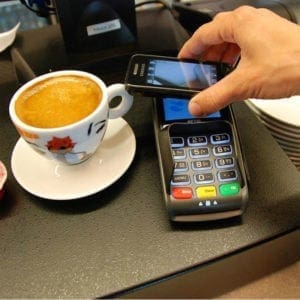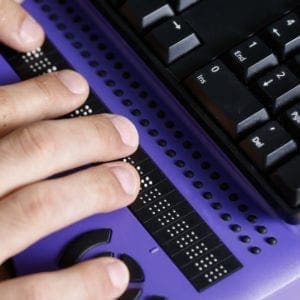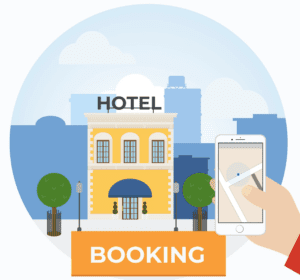 A new white paper reveals critical research about what hoteliers and guests deem important in a hotel’s in-room entertainment offerings, specifically relating to the guestroom TV experience. Titled the “2016 In-Room Entertainment Preference Study”, this report reveals eye-opening conclusions, including the fact that hoteliers consider several IRE services to be more important than guests do. The three-tier research project was commissioned by ADB and conducted by The Consultancy at Pointer’s Ridge.
A new white paper reveals critical research about what hoteliers and guests deem important in a hotel’s in-room entertainment offerings, specifically relating to the guestroom TV experience. Titled the “2016 In-Room Entertainment Preference Study”, this report reveals eye-opening conclusions, including the fact that hoteliers consider several IRE services to be more important than guests do. The three-tier research project was commissioned by ADB and conducted by The Consultancy at Pointer’s Ridge.
“ADB is pleased to present these in-room entertainment metrics,’” said Chris Dinallo, SVP Business TV for ADB. “This is a ground-breaking piece of research that provides direct and actionable intelligence from the two most important constituencies in hotels about what is most important to them in the IRE arena. Specifically, we wanted to learn how closely the hotel TV experience should mirror what guests have at home; whether they prefer to view their own content in the hotel (Bring Your Own Content, BYOC); how guests prefer to watch BYOC (do they connect to the TV and how, or use their own device, BYOD); and what they expect to find in the guest room of tomorrow. We asked similar questions of hoteliers, and then compared the data.
“The findings from this study are very enlightening,” he said.
Two thousand demographically-balanced hotel stayers representing stays at luxury, upscale, midscale and economy tiers were surveyed for this project. The survey instrument was developed on a strong foundation of Hotel Industry Executive Interviews and Consumer Focus Groups, where participants were asked in-depth questions about how they use the hotel in-room TV today, and what they want or foresee in the future of hotel in-room entertainment solutions. Respondents were then asked to rate the appeal of current programming and services and propose new in-room entertainment features.
Here are just some of the findings:
The hotelier viewpoint
One of the first observations is that hoteliers and guests value IRE services differently. Hotel executives tend to weigh most services more strongly than guests. Hoteliers all rated Interactive Program Guides (IPG), Searchable IPG, Over the Top Services (Netflix, Amazon Prime Videos, Hulu, etc.) and Screencasting (the ability to show OTT displays and other services from guests own devices via the TV screen) highly. Hoteliers also see Video on Demand and Pay-Per-View programming to be of high importance.

Other strong hotelier opinions included:
- A robust PMS interface is a must-have for many of these services.
- Guests want a home-like TV experience in the room.
- Guests really want to stream their own content to the hotel room TV.
The qualitative guest viewpoint
A key observation among guests is that the in-room TV experience is important, but not important enough to drive the choice of hotel by itself. While guests also put a high value on IPG (searchable or otherwise), OTT and screencasting, they do not see it as important as hoteliers. The same holds true for VOD and PPV. On the other side, guests say that hotel and local area information channels are important, while hoteliers see less value. It’s important to note that guests, particularly Millennials, really do want to view their own content on hotel room televisions.
The quantitative guest viewpoint
Guests were very vocal about what they want from an IRE experience. The following are verbatim quotes in response to open-ended questions on the consumer survey:
- “Most hotels don’t have any good channels or any way to know what channel is what.”
- “More hotels should allow you to connect your own personal media device to the TV for viewing.”
- “[IRE systems]need to be updated to reflect the changing tastes in TV (500+ channels as well as digital media receivers like Roku and Chromecast).”

Researchers learned that age groups prioritize IRE service differently. When compared to older age groups, 73% of Millennials consider TV “Very Important” vs. 54% of older guests.
They also discovered that Millennials assign a higher priority to almost all services compared to the other groups, with Boomers showing a pretty steep drop in preference compared to younger travellers. This insight shows that a hotel built to service the Millennial traveller needs a robust and feature-rich IRE offering.
Finally, “Guest Messaging” revealed itself as an emerging technology. The survey explored guest perceptions about (1) feedback on service requests and (2) the ability for a meeting planner to send targeted messages to their group members only. Survey respondents overwhelmingly said they want to be contacted. The preferred contact medium, especially for Millennials, was the hotel room TV and text message.

When it comes to mobile technology, guests carry an average of 1.71 smartphones and 1.49 laptops in the traveling party. Millennials, however, carry more devices than other age groups, an average of 2.48 smartphones and 2.22 laptops per travel party, pulling up the averages. They carry more tablets, too. When asked “Which, if any, of these devices do you connect to/watch over your hotel room TV?” the surprising finding was that 57.4% of guests are attempting to connect their own devices to the in-room TV (via a cable or streaming device).
- Most guests, across all age groups, have accounts with Netflix, YouTube, Amazon Prime, and Hulu.
- Currently, 62.1% of Millennials, 52.2% of Gen X and 17.2% of Boomers are using their own devices to stream media while at the hotel.
- Guests would PREFER to watch streaming media via the hotel room TV (Millennials more so than older guests): 37% of Millennials would prefer to enter a passcode into the TV; 23.9 % of Millennials would prefer to use Chromecast, Roku or a similar device; 26.2% of Millennials would prefer to use an HDMI cable or the like; and 27.6% of Millennials would prefer to stream their media wirelessly to the TV.
About the source
ADB used the findings from this study to reinvent its iTV platform called vuTyme. Built with these specific hotelier and guest requirements in mind, vuTyme is quick to install, simple to manage, easy to customize with branded features, and offers low capital and operational expenditures. vuTyme also offers Searchable IPG, OTT services access like Screencasting from BYOD, direct-to-guest messaging through the TV and more. Hosted in the Cloud, vuTyme requires no hotel head-end equipment and minimal in-room devices. The only hardware on-site is a compact set-back box which is discretely mounted behind the TV.
The ADB team will be available to discuss the insights contained in the whitepaper at the Hotel Technology Next Generation (HTNG) Conference in Barcelona, Spain October 25-27. Alongside demonstrations of the platform, ADB will be able to share further insights from the “2016 In-Room Entertainment Preferences Study.” To download a copy of the full whitepaper, click here.



















